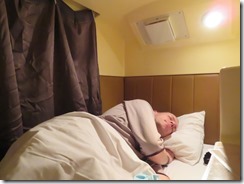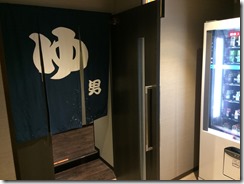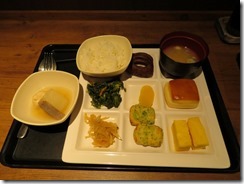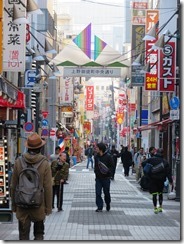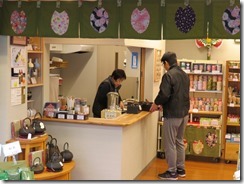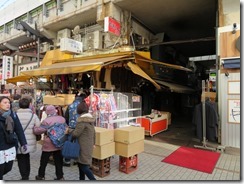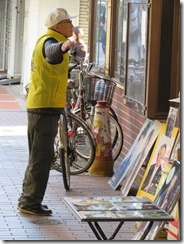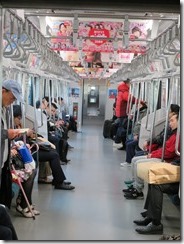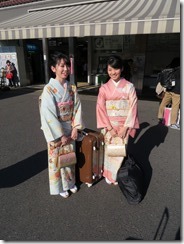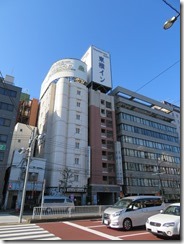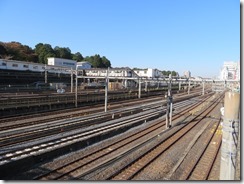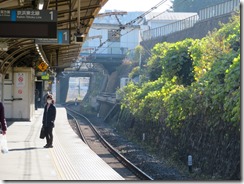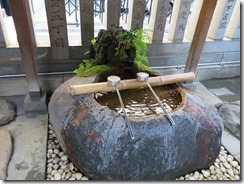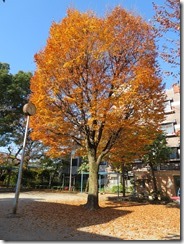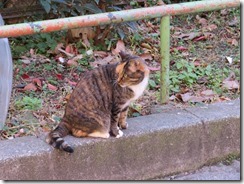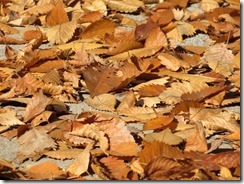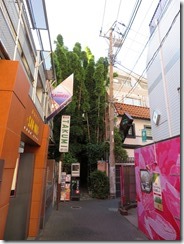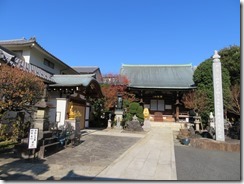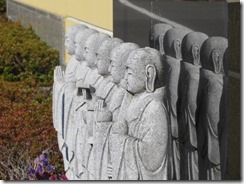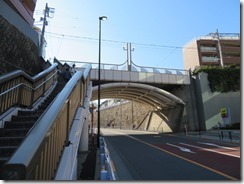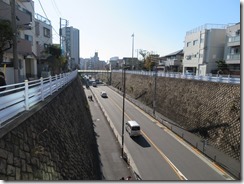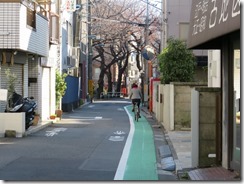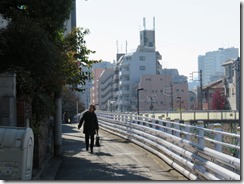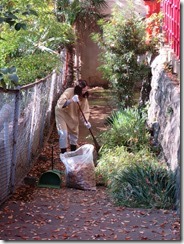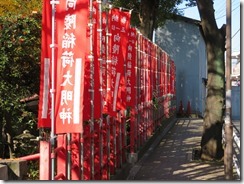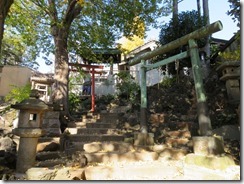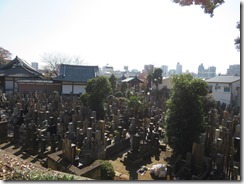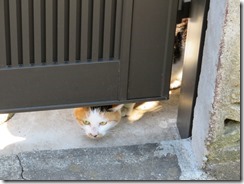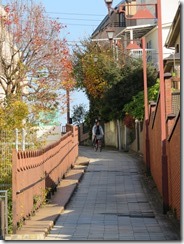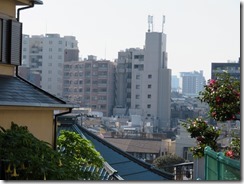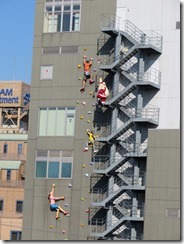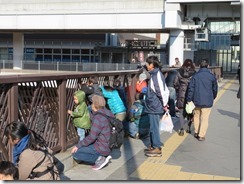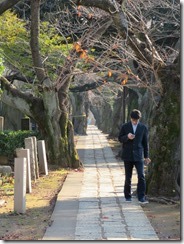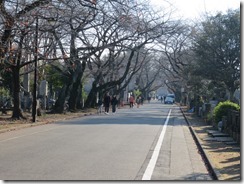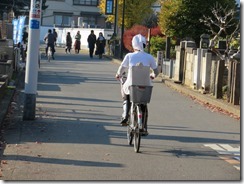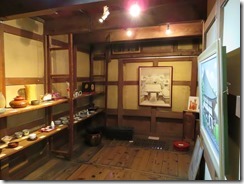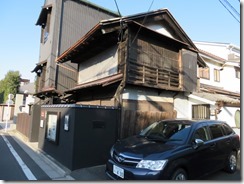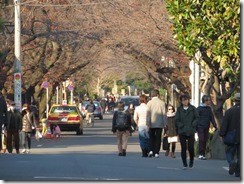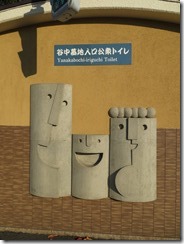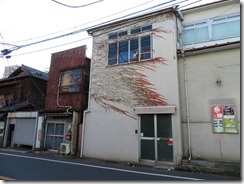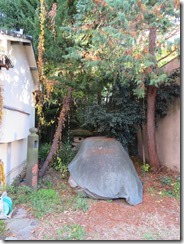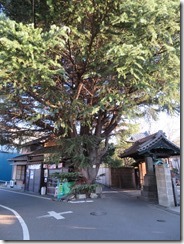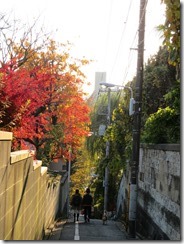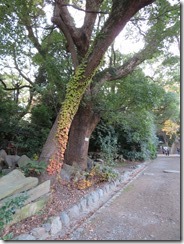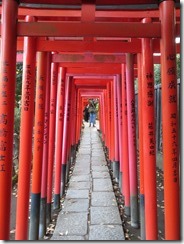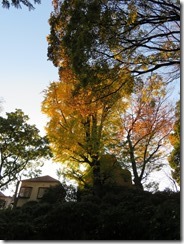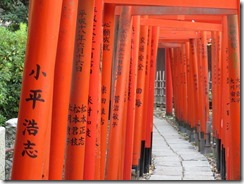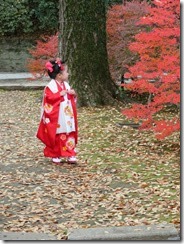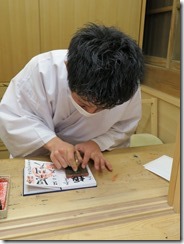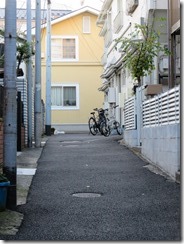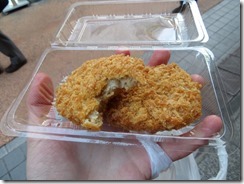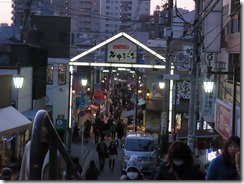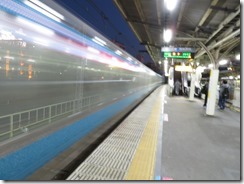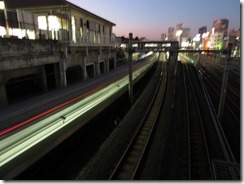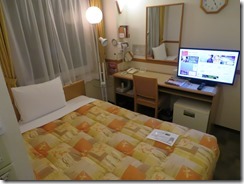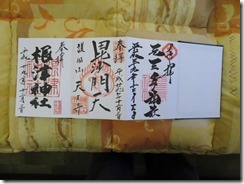Yesterday’s post now has photos. Also, I decided to actually proof read it.
Japan has the world’s highest proportion of vending machines, with approximately one for every fifteen people. I rarely went anywhere today without seeing at least one – most of them were drink machines, though, with the remainder being cigarette machines. Never saw any food machines, or any of the… weirder ones.
Tokyo is the world’s largest city, now containing more than one and a half times Australia’s entire population in the Greater Tokyo Urban Area. It is, legally speaking, not actually a city, but rather a special metropolitan prefecture of Japan, comprising the twenty-three special wards of Tokyo, thirty-nine municipalities to the west, and two outlying island chains.
So, the bed wasn’t too bad, though the pillow was a bit thin. Plenty long enough, though for some reason I found myself sliding down to the bottom of the cubicle as I slept. I set the alarm late so I could sleep in a bit, but I wound up waking up a bit earlier, and sat watching some TV on the set built into the cubicle. Didn’t really understand much. I don’t even remember exactly what I watched.
Got up after a bit and went to have a bath in the hotel’s bathhouse. I’d read there were showers somewhere, but I couldn’t find them – realised later they were on the sleeping floor, just off the coin laundry room (not entirely sure whether or not I’ve had used them instead of the public bath if I’d known beforehand). The bath was soooo very warm, though. Sadly, no photos – I snuck my phone in so I could take some sneaky shots if it was empty, but it never was, and I’m not sure I want photos of random naked men on my blog. Here’s one of the entryway, though.
After my bath, I had breakfast. They have a breakfast buffet here with a whole range of different things, which was included in my room price. (Actually, they have a dinner buffet too, which was also included, but I wanted to go have dinner in Ameya Yokocho instead.) Or rather, a whole range of different Japanese breakfast things, which means rice, miso soup, various pickled vegetables, and sweet breads (by which I mean breads that are sweet, not sweetbread), plus tamagoyaki and fried tofu, and even a big cooker full of oden, which I wasn’t expecting. I grabbed a tray with a bunch of tasty-looking things, but when I started eating, my stomach suddenly started protesting “hey, this isn’t breakfast food!” Managed to eat most of it, though.
After breakfast, I checked out, heading to my next hotel, the Toyoko Inn in Uguisudani (which means “valley of the Japanese bush warbler”, since it’s a valley where lots of them used to live). The Toyoko Inn is right near Uguisudani station – you can even see it from the platform. But first I walked up Ameya Yokocho in daylight for the first time. The shops open in the daytime were quite different from the shops open last night – instead of restaurants and bars interspersed by shops selling bags, now the shops open were fishmongers, butchers, even a green tea shop. I was amused to find one place where last night was a bustling and brightly lit restaurant next to a closed shop now instead sported a bustling kimono shop next to a dark restaurant. I was taking a photo of the juxtaposition when a passer-by in some kind of uniform offered to take a photo of me standing in front of the shop. I thanked him and told him I’d be ok, thanks.
Got the train from Ueno to Uguisudani (grabbing the stamp on the way through, thought I over-inked it, so it’s a bit blotty, and even worse, I put it on sideways) and headed to the Toyoko Inn. Love this poster that I saw at the station, in the image below – it’s got details on where the exits of the upcoming stations are in relation to the train, so you know which carriage is the best to get on. I also met a pair of girls dressed up nicely in kimono who graciously agreed to let me take a photo. Not entirely sure why they were dressed up – I saw a few today, but I’m not aware of any special events on.
The first trick is to cross over the railway lines, of which there are fourteen, which is quite impressive. The shinkansen lines also pass through, but at this point they’re still underground. Only four of those lines actually stop at Uguisudani Station – the Yamanote and Keihin-Tohoku lines heading in each direction. I couldn’t officially check into my hotel until 3pm, but I could leave my luggage there, and while I was there I took care of setting up the Toyoko Club membership I’d applied for (gets me cheaper room rates and earlier check in) and paying for the room. Grabbed a few brochures while I was there too.
I chose this particular Toyoko Inn branch because it’s near a neighbourhood of Tokyo named Yanaka (like, it’s literally on the other side of the station from my hotel), which is one of the last remaining areas with a Shitamachi feel, which is exactly the kind of ye olde Japan I enjoy, since it managed to come out of TTII largely unscathed. Shitamachi, meaning “lower city”, is where the lower classes used to live – as opposed to Yamanote (“the mountain’s hand”), the domain of the moneyed and the samurai. And yes, the JR Yamanote Line is named after this. It’s usually said that Standard Japanese is the Tokyo dialect, but to be more precise, it’s actually the Yamanote dialect, which was crisper, more polite and so forth. The Shitamachi dialect still exists today as slang, but mostly only slang used by rougher types, punks and bikers and yakuza and so forth. (For readers with any knowledge of Japanese, when people end words with –ee instead of –ai, that’s the Shitamachi dialect.)
During my planning for this trip, I happened to discover the Yanaka Shichifukujin Meguri, a pilgrimage to seven temples, mostly in the Yanaka area, each one devoted to one of the Seven Lucky Gods (who, while not at the top of the Japanese pantheon, are very well regarded in Japan). The Yanaka pilgrimage is said to be the oldest of many such pilgrimages in Japan. It looked achievable in not too long a time (especially considering this is my recovering-from-the-flight easy day), so I thought I’d give it a shot.
But first, I thought I’d visit a nice-looking shrine near my hotel that I randomly happened to spot on Google Maps, and it really was quite a nice looking shrine. Motomishima Shrine is its name, and it’s built on what seems to be a very small and very pointy hill, because the streets all around are pretty flat. As an added bonus, I was able to buy a book for getting goshuin, though the priest corrected me that it’s not called a “goshuinsho” but rather a “shuincho”. Basically, the priest presses down one or more large stamps with the temple’s seals, and then uses black ink and a brush the name of the temple, the day of the visit, and other messages on and around the stamped portions. They can be quite artistic. Sadly, the priest at Motomishima didn’t do it in front of me, so I couldn’t watch.
That done, I headed back to the station to head a few stops up the line to Tabata Station, the nearest station to Tokakuji, where the Yanaka pilgrimage starts. Turns out, by the way, that Motomishima Shrine is also the first stop of a Shichifukujin pilgrimage, this one called the “Shitaya Shichifukujin Meguri”, enshrining Jurokujin, the god of the elderly and longevity. It’s all north of the Yamanote Line, though, and I wanted to stay in Yanaka, which is on the south side, so I headed off as planned.
So, I got to Tokakuji, and… noone was there. Actually, noone seemed to be at Motomishima either, but I could see movement inside, and one of the other visitors called him out to talk to him. At Tokakuji, there was no sign of life at all, and the doors to the place where you can buy charms and fortunes and goshuin were locked, so I took some photos and moved on.
The roads around the temple were quite impressive, though – I couldn’t tell if it was natural or excavated, but the main road was in a deep trench, far below the houses and minor roads to either sides. Actually you’re probably going to see a lot of photos today of regular old roads. One thing I was quite pleased to discover, though, is that’s it’s still the middle of autumn-leaf season here. Vivid reds and yellows everywhere. Quite different from living in a primarily evergreen area.
I took a small diversion at this point to see a nearby Inari shrine, which are known for their red tori gates. It was quite small, but quite nice. There was also a poor woman raking up all the fallen leaves – quite different from living in a primarily evergreen area. =) I also dropped by Nishi-Nippori Station for a stamp, since it was right there.
So I moved on to the second temple… and found it also empty. It did, however, have in the attached graveyard the most serene terraced area, with no sound but the rustling of leaves and the chirping of birds – it was easy to forget that I was still standing in the middle of the biggest city in the world.
The third temple had a person present, but she seemed like she was a caretaker-type who was there to help some mourners rather than someone who’d do a goshuin for me. At that point, I decided to give up on the pilgrimage and just revert to the standard plan “do what looks pretty”.
First thing: the third temple is next door to a street named Fujimizaka (= Fuji-Viewing Slope) – as you might guess, you can see Mount Fuji from the top. Or to be more precise, you could, prior to May 2013, when a building was built that blocked the view. That’s rather a shame, because it was previously regarded as one of the best Mount Fuji views in all Japan. One would have thought they’d have considered that when planning, but I suppose the hill is quite a ways away, so they probably never considered it. There looks to be some kind of community project to restore the view, but it seems to consist of knocking down the offending building rather than constructing some manner of higher viewpoint or something. The photo on the right is my best guess as to the building in question.
At the top of the hill, I went to see Suwa Shrine, which was quite nice, with gingko trees dropping leaves all over. Headed on down the road, and when I hit a major road, I turned left to find Kyo-oji, which I popped into for a brief stickybeak, then headed on to Nippori Station for a stamp, since again it was right there. There was also a bridge in front of the station that one of the brochures from the hotel was advertising as a kind of open-air train museum. To be perfectly precise, though, it was literally a bridge that you could stand on and watch trains pass by, including the shinkansen, which by this point has surfaced. While the brochure’s claim that you can “view more than twenty trains at once”, it should be made clear that you can only do so with some patience.
Tennoji, the next temple on the pilgrimage was also quite proximate to Nippori Station, so I thought I’d give it a shot, and to my surprise, there was a priest. It is a more major temple than the first three, mind. Unfortunately, he sent me away to sit on a bench while he wrote the goshuin. At first he refused to do it, which momentarily perplexed me, until he told me I’d used the wrong verb to request it. Couldn’t tell if he was trying to crack some kind of dad joke, because he said it completely straight-faced.
Goshuin in hand, I moved out to view Yanaka Cemetery. Originally attached to Tennoji, the government at the time of the Meiji Restoration confiscated it and turned into what was at the time Japan’s largest public cemetery. I could go into more history, but I didn’t really stay here a long time – it was pretty enough, but I had a sudden revelation at this point that I’d forgotten why on Earth I’d wanted to come to Yanaka. It wasn’t for all the temples, or even for the rather pretty graveyard, it was for the ye olde streets and the Shitamachi atmosphere, of which the temples and graveyard are a fairly small part.
This revelation was helped in part by randomly passing an old house that had been converted into a small art gallery with free entry – I went into have a look, and I just loved that old building. I wandered a few other random streets, then pulled out the phone to re-research the best bits of Yanaka.
Turned out I was just around the corner from a huuge old cedar next to an old-style building. Its rooves were carpeted with needles. Not to mention several other quite pretty but quite incidental sights.
The big thing that most of the websites also suggested was Yanaka Ginza, a shopping street with a lot of small, old shops, but I also wanted to visit Nezu Shrine a lovely shrine in nearby Nezu (as I’m sure you could tell from the name). Both were roughly equidistant from me at that time, though ninety degrees apart. I decided to walk briskly to Nezu first and then Yanaka Ginza, as the latter would be closer to a train station to get back to the hotel again. I was getting fairly tired – by this point, it was 3pm, and I’d been strolling around since 10am, five hours earlier. So much for an easy day. Plus, sunset is at 4:30pm.
Arrived at Nezu not too much later and had a wander around. There was a hill up the back with lines of tori gates which I had a walk through. Quite small, though – I had to duck under them. Also, there was a priest doing goshuin, and this time he did it in front of me, so I’ve got some photos. I also drew an omikuji (fortune slip), and got “suekichi”, which the slip translated as “Not-so-good fortune” (it was in Japanese, English, Chinese and Korean) but which according to my dictionary means “future good fortune”. Either way, I tied it to a wire with other peoples’ – tradition is to tie them on or near a pine tree, as the Japanese word for pine tree is a homophone for “to wait”, so the hopes are the bad luck will wait around at the shrine rather than following the person home. Since my fortune was “good luck to come later”, I wonder if that was a mistake in my case.
Headed towards Yanaka Ginza. On the way, I passed a Mos Burger – a Japanese burger chain, with some very Japanese burgers – and thought of popping in for a late lunch (hadn’t eaten a thing since breakfast) or early dinner, but once I’d had that thought, my stomach again started protesting, which is a mite concerning. I managed to make it to Yanaka Ginza before actual sunset time, but not before it had already set below the surrounding buildings.
Yanaka Ginza was everything the internet promised. Quite a nice place, but getting rapidly darker. I grabbed some croquettes to munch on from a stall selling their remaining stock – a bit cold, but still quite nice. I also joined the throng buying a cup of amazake, sweet, slightly fermented rice – but more importantly, warm. It’s usually served in cold weather. I’m not a huge fan of alcohol, but I’ve been kinda wanting to try this. It didn’t taste of alcohol, but… it was almost unpleasantly sweet. Basically, the starches in the rice had been turned to sugar, but then were stopped before they went all the way to alcohol. Don’t think I’d have it again. On the plus side, I saw a woman pushing three cats in a stroller.
I headed to the top of Yanaka Ginza… to find myself standing at Kyo-oji again. Yes, that was where I turned left to reach Nippori Station many hours and even more paragraphs ago. If I’d turned right instead of there, Yanaka Ginza was barely a block away. So annoyed with myself about that.
Headed back to the hotel, playing a bit with the time lapse setting on my camera to take photos of trains while crossing the overpass.
I got back to the hotel to finish checking in and actually move into my room. It’s a single room, but the bed is quite large – for a moment, I was afraid they’d put me in a double. It’s kinda like the double-lobed room James and I were in in Osaka during the last trip, though of course with only one lobe.
I was originally planning to just rest up for a bit, then go see some night sights, but once I’d gotten a bit warmed up, I started to feel even a bit feverish. I’m starting to wonder if my butterflies-in-the-stomach feelings, general lack of appetite, and rather concerning lack of excitement are due more to illness than nerves. I’m honestly starting to worry myself with how little I feel excited to be here, especially considering how I felt about the trip during the planning stages. Guess we’ll see how things progress.
Also, this post has taken me a while to write, and it’s getting quite long, even for me. Gonna have to try even harder to be more concise.
Time for bed. Today was lovely brilliant sunshine all day, so I’m hoping that continues.
Here’s the goshuin I got today. From the right, it’s Motomishima Shrine, Tennoji Temple, Nezu Shrine. Also got four station stamps: Uguisudani, Tabata, Nishi-Nippori and Nippori.
Today’s photo count: Six hundred and forty-two.
Today’s step count: 19,768, according to the phone. 13.9km. I brought a stand-alone pedometer, but I wasn’t wearing it today.

